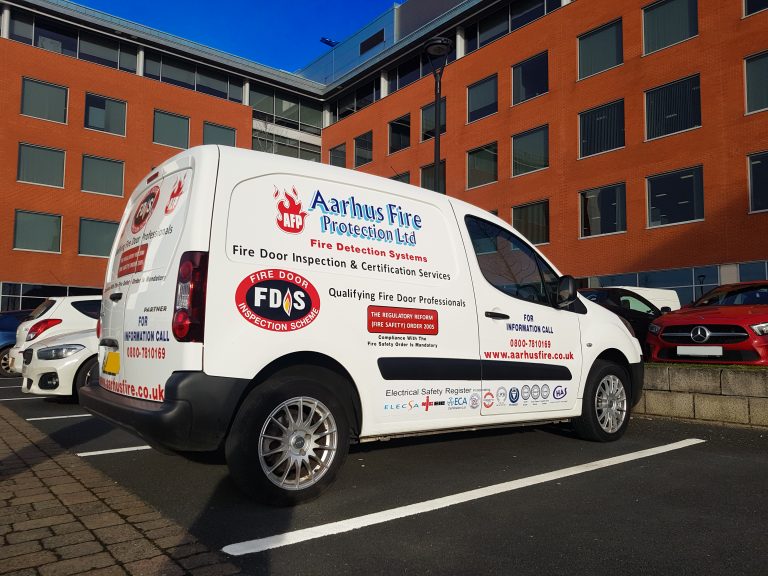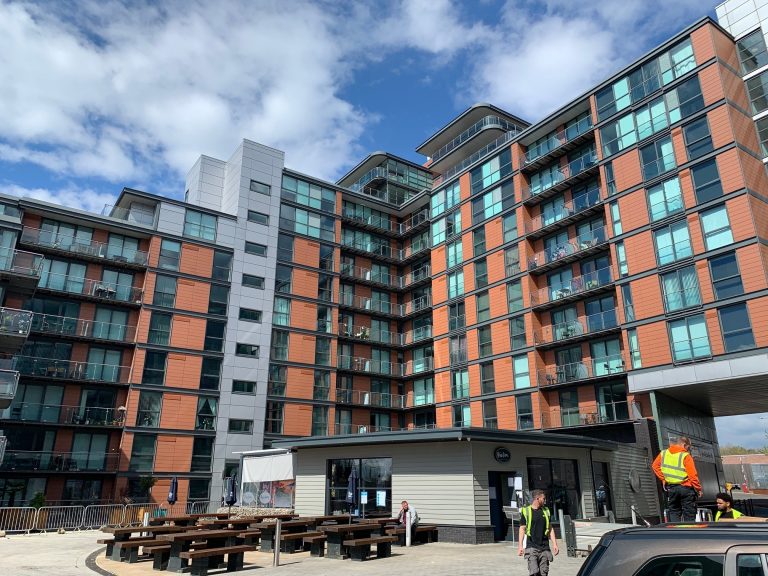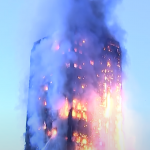New Laws Will Be Soon in Force to Ensure Your Fire Safety
The Fire Safety Act and The Building Safety Act are the two legislations that will look after the fire safety of the people living in multi-occupied and high-rise buildings. While the Fire Safety Act is related to all multi-occupied facilities, Building Safety Act is associated with high-rise constructions at least 18 meters or more.
The primary purpose of the two documents is the fire protection of the people inhabiting multi-occupied buildings.
The government has taken steps to change the rules following the tragedy of Grenfell Tower. Unfortunately, then many people died because the fire had spread incredibly fast. One of the reasons was that the materials used for constructing the building were highly flammable.
Fire Safety Act and Building Safety Act Are Ready for Their Purpose
To prevent this kind of tragedy and ensure the people’s fire safety, the British government started to work immediately on creating laws to protect people from fire.
After about a year of procedures, readings by experts and approvals by the Parliament and the Queen, Fire Safety Act and Building Safety Act are ready for their purpose, which is to make the multi-occupied and high-rise buildings more fire protected. The first one is expected to be in force in a few months, but the second one will be fully in power within 12-18 months.
With the New Rules of The Fire Safety Act
All Multi-Occupied Buildings Will Be More Fire Protected
The Government Reported Changes Related to the Fire Safety
After the unforgettable tragedy in Grenfell Tower in June 2017, the British government started to work on rules to prevent this kind of life-consuming disaster from happening again and ensure their citizens remain safe from fire.
Solutions for developing and improving safety standards in buildings where multiple people live will be The Building Safety Bill (now The Building Safety Act) and The Fire Safety Bill (now The Fire Safety Act 2021 or The Act). These documents aim to make the living environment in multi-occupied buildings fire-safe and reduce the number of deaths if the unimaginable happens.
The government reported changes related to the fire safety of the buildings where multiple people lived in The Fire Safety Bill (The Bill) and presented it on the 19 of March 2020. The purpose of this plan for a new law was to reduce the fire risks in various sectors of multi-occupied residential buildings and clarify a responsible person who will have the duty to manage this.

According to The Fire Safety Act 2021, the responsible person must manage the fire safety in common parts of the multi-occupied buildings. But their duty does not finish just by doing this.

Aarhus Fire has started to receive inquiries about changes even before the act gets approval and formal legalisation.
Aarhus Fire has already made the nests of many people fire-safe. As a result, they are more protected and can live in peace without worrying if their children are safe from fire.
The Bill Finally Received Royal Assent
After a year, The Bill finally received Royal Assent and became an Act on the 29 of April 2021. So now, The Fire Safety Bill is Fire Safety Act 2021 (The Act). This means that the changes proposed earlier in The Fire Safety Bill in March 2020 are now the law and must be strictly observed.
The Act will amend the parts of The Regulatory Reform (Fire Safety) Order 2005 relating to the buildings where “two or more sets of domestic premises” live regardless of the height of the building.
The Fire Safety Act 2021 will ensure that responsible persons in multi-occupied buildings provide the people’s fire safety following more stringent rules.
The Act that applies only to England and Wales contains four sections that clarify what type of buildings and what things in these buildings will be within the scope of the law. It also gives information about the power of the relevant authority to change premises to which The Fire Safety Order applies and amendments in Article 50 of The Regulatory Reform (Fire Safety) Order 2005 related to risk-based guidance that will assist the responsible persons in the implementation of the duties.
What the Fire Safety Act 2021 Will Change?

Duties of the responsible person:

According to The Fire Safety Act 2021, the new fire safety obligations of the responsible person referred to the “building’s structure, external walls, and any common parts; all doors between the domestic premises and common parts; the reference to external walls includes doors or windows in those walls; anything attached to the exterior of those walls (including balconies).”

Respectively to The Regulatory Reform (Fire Safety) 2005, among the obligations of the person responsible for fire safety of the people living in multi-occupied buildings are:
The responsible person must assess the risks of fire and understand the requirements and what must be undertaken to ensure the fire safety of the people living in the building. After the risk assessment, he is obliged to take concrete actions to minimise the fire risk in those parts of the building that all occupants share.
The persons responsible for the fire safety of the building must carry on fire risk assessments regularly and update the information on it. Furthermore, they must record everything related to this assessment and present them to the relevant law enforcement authorities upon request.
Eliminate or decrease the risks of hazardous substances
Suppose a hazardous substance on the premises could cause a fire. In that case, the responsible person must do everything necessary to eliminate the danger for the people living in the building. If elimination is not possible, they must apply measures following the risk assessment and decrease the risk to the minimum possible by controlling and mitigating the harmful effects of the danger.
Firefighting and fire detection
The responsible person must guarantee that the premises are equipped with appropriate firefighting equipment, fire detectors and alarms. They must also organise and provide easy access and navigation using signs to the firefighting equipment which people can use in case of fire.
Emergency routes and exits
The person responsible is obligated to ensure that the paths to the emergency exits are unobstructed and can be easily used in the event of a fire. They have to secure emergency routes and departures to lead as directly as possible to a safe place so that people can be evacuated quickly and safely in the event of danger. Emergency routes and exits must be marked with signs and provided with emergency lights.
Maintenance
The responsible person is obliged to ensure the maintenance of the facilities, equipment and devices are kept up to date and work smoothly.
Although The Act received Royal Assent, it has not yet been into force. But its implementation and use are expected to be a reality until the end of this year. When this happens, the responsible person of the premises under Article 3 of The Regulatory Reform (Fire Safety) Order 2005 must make the necessary changes to ensure that people in the building are fire safe.

What Regulatory Reform (Fire Safety) Order 2005 is doing?
Regulatory Reform (Fire Safety) Order 2005 controls “fire safety in non-domestic establishments, as well as workplaces, but it also regulates the general parts of domestic buildings with two or more living premises. It requires a responsible person to ensure the fire safety of the people living in this type of building. This person must identify the risks and take the necessary measures to eliminate them and protect the people. This person also must keep records about the fire-risk assessment, which he must do regularly and provide when requested by law enforcement.
What is a responsible person?
In a multi-occupied building:
The responsible person in a multi-occupied building usually is someone authorised to control the premises or the owner when there is no other assigned person. Usually, the responsible persons are managers, leaseholders, or owners of the building.
In a higher-risk building:
According to the Building Safety Bill, in a higher-risk building, a Responsible Person can be an Accountable Person – in most cases, landlords or freeholders. All occupied higher-risk buildings must have at least one identifiable Accountable Person, known as the Principal Accountable Person. They will be responsible that everything related to the fire safety and structural safety of the whole building is managed correctly following the new, more strengthened rules. If there is just one accountable person in a building, it will also be the Principal Accountable Person of this building.
Changes related to building safety, including the fire safety of high-rise constructions, are now a reality. After the long journey that started on the 5 of July, finally, The Building Safety Bill received Royal Assent. The Bill Completed the last stage of the trip on the 28 of April. So now, The Building Safety Bill is already an Act.
Although already it is a law, The Act will be in full force within 12-18 months. The government will structure secondary legislation and prepare the industry for the new law during this time.
The Fire Safety Clause 134
The new changes related to the fire safety of the High-rise buildings are broadly explained in the Fire Safety Clause 134 of The Building Safety Act. In addition, it is an Amendment to The Regulatory Reform (Fire Safety) Order 2005.
The Fire Safety Clause 134 will increase the transparency of the activities related to fire safety in high-rise buildings. Responsible persons must record any information about fire risk and support compliance with and effective implementation of FSO requirements.
The Building Safety Act will inject a new, more powerful regulatory regime related to all higher-risk buildings. The new rules will ensure the building safety and fire safety in these constructions, creating a safer and protected environment for the occupants.
Although already it is a law, the Building Safety Act will be in full force within 12-18 months. The government will structure secondary legislation and prepare the industry for the new law during this time.

Which buildings will be within the scope of the new regime?
The buildings that will be within the scope of the new regime will be high-rise residential buildings with a height of at least 18 meters or will have at least seven floors and will contain at least two residential units. This also applies to nursing homes and hospitals if they have the same measures required by law.
Parts of The Bill will also apply to buildings owned by the Crown.
The scope of the new regime will be determined by primary and secondary legislation. Primary and Secondary legislation will determine the height criteria, whether the building contains at least two housing units and technical definitions.

Which buildings will be within the scope of the new regime?
The buildings that will be within the scope of the new regime will be high-rise residential buildings with a height of at least 18 meters or will have at least seven floors and will contain at least two residential units. This also applies to nursing homes and hospitals if they have the same measures required by law.
Parts of The Act will also apply to buildings owned by the Crown.
The scope of the new regime will be determined by primary and secondary legislation. Primary and Secondary legislation will determine the height criteria, whether the building contains at least two housing units and technical definitions.
The responsible person must reduce the risk of fire
If a fire spreads to buildings with multiple households in buildings of this height, the risk of people losing their lives is numerous. Therefore, the responsible person must do all necessary measurements to reduce the risk of fire to a minimum and provide the essential equipment such as fire doors, fire alarms, etc., and fire-fighting equipment used in case of fire.
According to The Fire Safety Order, a responsible person is usually a building owner, employer or other people who control the premises. They will be required to regulate activities to comply with the FSO and make a detailed fire risk assessment concerning the common parts of a high-rise residential building. They also must keep all records of relevant fire safety information to provide them upon request by the relevant law enforcement authorities (about premises in England – the Secretary of State). These officials also will have the power to expand the list of the relevant fire safety information and include details of when and in what form the data must be given.

The changes will provide fire safety improvements and ensure that residents of high-rise buildings have fire safety information. The government has estimated that at least 1.31 million people live on this kind of tall premises. All of them will be affected by the coming new stringent regulatory regime.
Learn more about the upcoming new rules related to fire protection in high-rise buildings following the link:
https://www.gov.uk/government/publications/building-safety-bill-factsheets/buildings-included-in-the-new-more-stringent-regulatory-regime-factsheet
The disaster people will never forget
The Tragedy at Grenfell Tower
Seventy-two people died in a fire that engulfed the high-rise residential building – Grenfell Tower.
The blaze, which started in the kitchen of Flat 16 on the fourth floor of the east elevation, quickly spread through the window. It increased up 19 stores to the top of the building. All four elevations of the building were engulfed in flames for minutes. In total, 28 flats were exposed to ruthless fire.
Firefighters worked ceaselessly to get it under control. But unfortunately, they hardly managed to extinguish the blaze after 24 hours, which during that time took the lives of 72 people.



